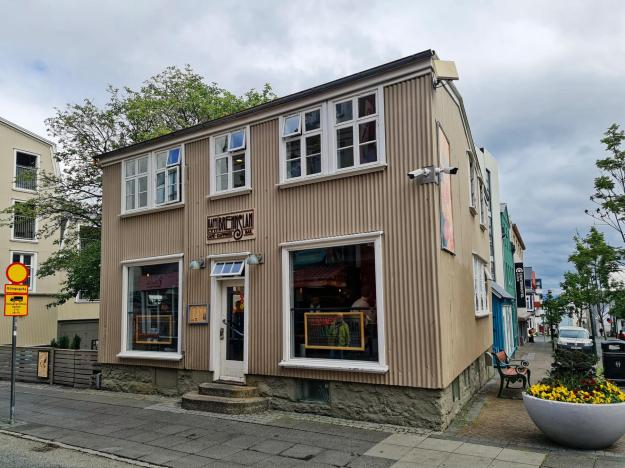Sunday 11 May 2025 – Our last day of “freedom” before the serious walking starts, and the local variant of Mother’s Day here, which meant we (the two ladies, that is… some assumptions being made here!) benefited from some extra chocolate at breakfast.

The breakfast available was, otherwise, rather woeful; particularly absent was any hint of fresh fruit. Still, we fuelled up on what we could find and made our way out into a delightfully sunny day.
We had some formal objectives for our wandering – a couple of towers, a couple of churches and, particularly, a lunch in the Piazza del Amfiteatro which we hoped would be a Nice one.
Selecting our activities based on when the light might be best for photography, we started with the Torre Guignigi, which is unique in having holm oak trees growing out of the top of it.

It is one of only two medieval towers surviving in Lucca where once there were more than one hundred.
There are over 200 steps to the top, but despite this it is a popular tourist site


and it offers some fine views over the city.



We felt we’d earned a coffee break before we walked along to our next place of interest. This was the Church of San Michele in Foro, which boasts a very impressive facade

but which is a little unusual in that it’s clearly more a place for meditation and prayer than a place to listen to the word of God – there are no pews, and the space is entirely open.

By this stage, we knew that the cathedral would be open for visitors, and so headed that way, passing, as we did, the 12th century church of of San Giusto, which, like several churches in these parts, has a very striking facade.

The cathedral, the Church of St. Martin, is, as one would expect, an imposing building, again with a wonderful facade (the picture below was taken later in the day when the sun illuminated it better).

Inside is the sort of space one would expect in a significant cathedral

lavishly embellished
with some impressive marble work

and some lovely stained glass

some of which was throwing wonderful colours from the sunshine.

There’s a sort of “temple within a temple”

which, under normal circumstances, would house the Volto Santo, the “Holy Face of Lucca”, an 8-foot tall carving of Christ on the Cross

Picture courtesy of Wikipedia
but at the moment contains just scaffolding, as the figure has been removed for restoration work, and can be seen displayed in a workshop setting in the church.

Inside the cathedral is a statue of the eponymous “St. Martin and the Beggar”

showing the saint using his sword to cut his cloak in two in order to give half to the beggar. This is the original and there’s a copy now on the facade of the cathedral,

looking, it has to be said, in need of the ministrations of someone with a power washer and a long ladder.
With over an hour left until our lunch appointment, there was clearly time for those of us with courage, fortitude and good quads to climb the other tower of note in Lucca, the Torre del Ore, the suitably-named Tower of the Clock.

It turned out that I was the only one of the three of us prepared to make the journey, and it turned out to be rather a lovely experience; in striking contrast to the Torre Guignigi, I was the only person in the tower, apart from the gatekeeper, who charged me €8 to climb the steps. At the top I had the entire platform all to myself

and could enjoy the lovely views over the city



including a great view of the Torre Guignigi.

Whilst I was climbing the tower, Jane and Caroline relaxed at the near(ish)by Gorilla Craft Beer and Cafe, where I eventually joined them so that we could sample some Italian gins as an agreeable prelude to lunch. That was taken back in the Piazza del Amfiteatro, at a very good restaurant called Sotto Sotto. We were well looked after by Eugene and eventually tottered back to our hotel so that we could get some rest and prepare for the forthcoming rigours.
Tomorrow is Day 1 of The Walk; we will walk to Rome, and Caroline will join us for the first week, as far as Siena. The significant datum is that we have nearly 30km to cover tomorrow, after a short train journey to where we will start, in Altopascio. We’re all feeling a little bit daunted by the thought of the distance we have to cover, and you’ll have to keep in touch with these pages to see how we get on, won’t you?





























































